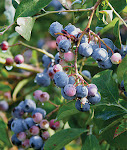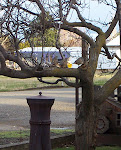The sunchoke, also called Jerusalem artichoke, is a variety of perennial sunflower grown for its edible low-starch tuber which looks much like a small potato but tastes like a water chestnut.
Sunchokes are a native American sunflower that grows substantial amounts of ginger-shaped and potato-like tubers an easy-to-grow, delicious, prebiotic, and wonderfully productive garden vegetable. It has been recorded as being in cultivation by Native Americans in 1605 by Samuel De Champlain in French Canada. They are also known to be a health-promoting prebiotic food stuff that is great for carb-counting dieters and diabetics alike.
Storing and preserving. Sunchokes will keep in the refrigerator for 7 to 10 days, or set them in a cold moist place for 2 to 5 months. Sunchokes can be frozen or left in the ground until needed; protect over-wintered sunchokes with a layer of mulch.
Harvest. Sunchoke tubers will be ready for harvest is 120 to 150 days after planting. Cut off flower stalks as soon as they appear to encourage tuber, not seed, production. Plants also can be “lodged” once flowers appear; step on stems at soil level and bend them to the side diverting energy to the tubers. Sunchokes harvested after a light frost will be sweeter tasting. Sunchokes are ready for harvest when leaves die back; lift tubers with a spading fork. Tubers left in the ground will regrow the following season.
Common name. Jerusalem artichoke, sunchoke
Botanical name. Helianthus tuberosus
Origin. North America
My plants are growing beautifully this year! Hoping for a good harvest!
 |
| My sunchoke palnts this year! They are about 7ft tall! |
















